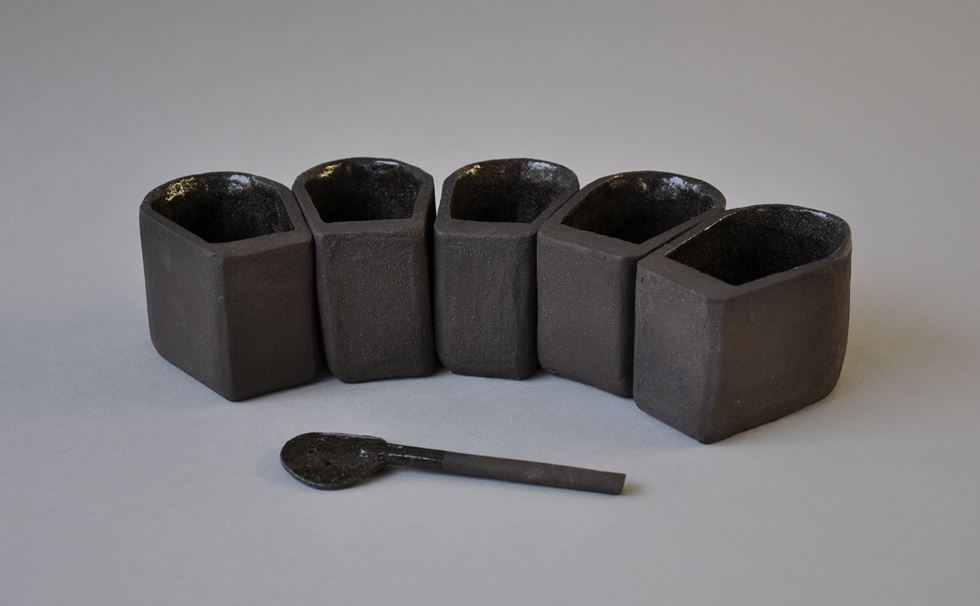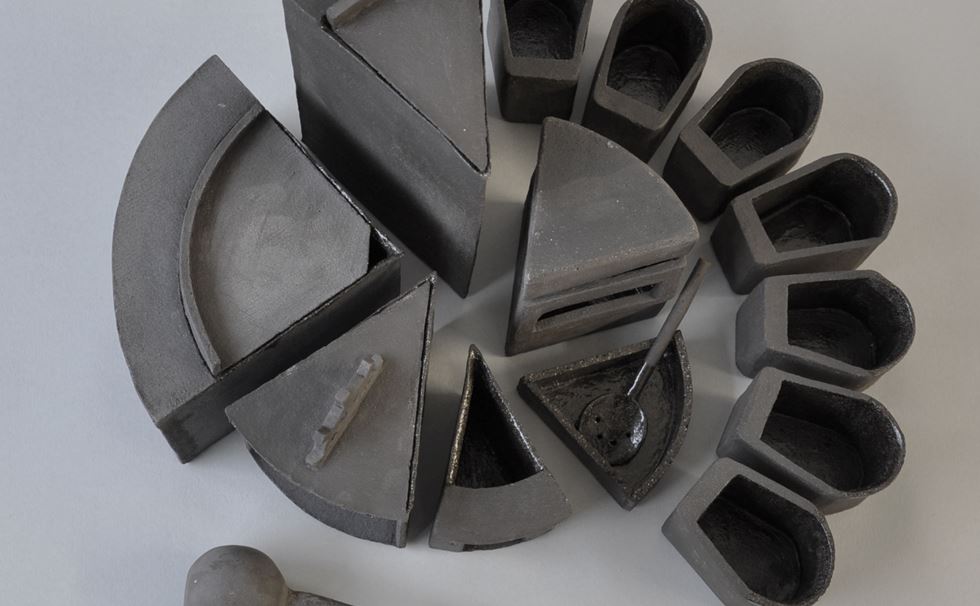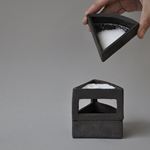Designers in Residence 2016
Q&A with Rain Wu
Coinciding with International Women's Day, Wednesday 8 March 2017, the Design Museum speaks to the current designer in residence, Rain Wu about her latest project 'The Tea Set', her career so far and her design inspirations.
About the resident
How did you first become interested in design?
I liked graphics and illustrations when I was a kid and have collected folders of printed clippings that ‘talked’ to me. I also drew a lot from a young age, which accumulated a familiarity that has now become an useful communication tool for me in my practice. My understanding of art was opened when I moved to the UK in 2002- it was the first time I understood art stems from ideas and not just a visual form. The physical outcome is only partial and is to manifest and assist the idea. My fascination to spaces and architecture led me to pursue the subject in university. Spaces can be transporting and beside the visual enticement, they can also create physical resonance when people are within.
How has your design education and background in architecture influenced your career?
I first studied architecture at The Bartlett School of Architecture where the ethos of the school required a lot of thinking outside of the box and placed a strong focus on the aesthetics of the outcome. I later went to the Royal College of Art and studied amongst artists and designers of different disciplines. The course developed my research ability to digging deeper with a critical angle. I have most enjoyed the possibility to collaborate with colleagues with very diverse practices.
What inspires you the most about design?
That it lasts. Sometimes it is the concept, sometimes the physical lifespan of the work but more recently, about design that creates a sensorial experience that could become a lasting memory.
Where do you draw inspiration for your work?
Inspirations are everywhere. I particularly like ad-hoc moments where daily objects are combined in an unintentional way, forming a mutation in the designed world. I also enjoy meeting people doing all sort of interesting things in London, it is a very fertile soil for designers.
How has your approach to design evolved over the years?
In my 20’s, I used all my waking hours- late nights, weekends, holidays- to work on projects that interested me. I constantly want to test things to see how I would materialise ideas. I turned 30 in January and I set myself a goal to take all the findings from the 10 years to work in a more focused way so I can develop my projects more depth.
What’s your biggest achievement to date?
The Design Museum residency gave me a great platform to create work in the cultural realm. It was great recognition especially as it brought a different type of design to the museum- something more interactive. I am also very excited about an outdoor large scale installation that is opening with the Sharjah Biennial this Friday (10th March 2017) which I collaborated with architect Eric Chen to create an outdoor installation with 600 pieces of police riot shields that talks about collectivity and democratic power.
What’s your goal as a designer?
I like to challenge conventions and use design as a tool to make people think differently.
What makes good design?
A good design is when it can resonate with people and is able to evoke something personal.
Tell the Design Museum about ‘The Tea Set’ about and the thought process behind your project?
This project is a personal development from my continuous collaboration with designer Shikai Tseng on narrative food design. I wanted to make the piece site specific to the new Design Museum so tea became a good medium to share the stories and taste tea, Britain’s favourite drink, in a different way.
What does the tea ceremony involve?
In The Tea Ceremony, a story that explored the cultural history of why the British drink tea is prompted through each of the objects in The Tea Set To give you an idea, the ceremony opens like this: _Dear guests, welcome to this tea ceremony at the new Design Museum where we hope to give you a potted history of Britain’s favourite drink. There is nothing quite so quintessentially British as a cup of tea. The average cuppa might contain a blend of leaves from India, Sri Lanka and East Africa and the sugar you use to sweeten it comes all the way from the Caribbean. Just as the most popular dish in Britain is Chicken Tikka Masala, we’ve got the empire to thank. It’s fitting as we’re currently in the old Commonwealth Institute, which was originally established to research raw materials found across the British empire. The Tea Set in between us, fuses a British cup of tea with Eastern attention and appreciation, which will be unveil episodes of stories.'_
What’s the cultural history behind tea?
Tea is an universal drink, second most drunk substance to water. It therefore creates a common ground between people and between cultures. Tea to the British is interesting because there are so many socio-political influences that brought tea to it’s current state.
What’s your favourite brew?
Taicha 18 ‘Ruby’. It is a black tea from around the Sun Moon Lake in the mountainous area in Taiwan. The aroma is very unique.I also grew up drinking Oolong Tea which my dad makes every Saturday for my close relatives, it is a family ritual that is unbroken for decades and one thing I missed very much being in the UK.
How many cups of tea do you drink in a day?
It depends, at least 1 or 2.
How do the senses triggered by food and drink transform your work into an experience?
A moment to stop and experience. Visual stimuli are fast and especially with the advancement of mobile technology, people receive images like machine gun blasts, so much that it is hard to appreciate fully. I want to use the taste of tea and the ceremonial format to slow people down to pause for some thoughts and reflection
It’s International Women’s Day (8 March); do you have a message for young women considering a career in design?
Be bold and be free, don’t compromise.
Do you think there are enough women in design? What should be done to encourage more women to get into the profession?
Design is a progressive and open-minded field and generally there are more women in design than many other professions. When I practice in architecture, I often attend meetings with 10 other men, where the only other woman in the room is the receptionist. I am working with the Sharjah Art Foundation in the UAE this week and over half of the staff are women with many in a high position. It is very encouraging. There are more women in design than many other professions because design is a more progressive and open minded field, I find. But this is not always the case, I am at the Sharjah Art Foundation at the moment, where over half of the staff is women.
Finally, it’s International Day of Happiness this month, which design makes you happy?
Working, traveling and sharing a good time with people.

The Tea Set | Image courtesy of Rain Wu

The Tea Set | Image courtesy of Rain Wu

The Tea Set | Image courtesy of Rain Wu

The Tea Set | Image courtesy of Rain Wu




Designers in Residence Programme
The Designers in Residence programme is a core part of the museum's activity, and exists to provide emerging designers, across any discipline, with time and space away from their regular environment to reflect, research and consider new ways of developing their practice.